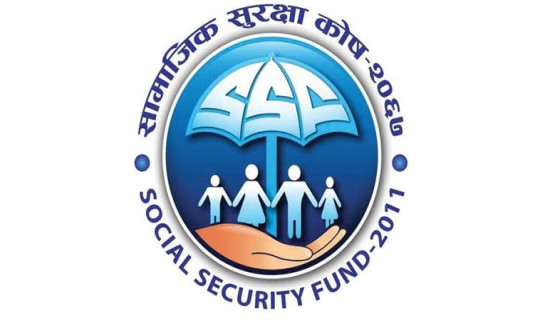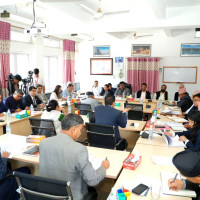- Friday, 25 July 2025
Reflection On Communication Barriers
The term `communication` carries a wide range of implications in our daily lives. Communication plays a life-sustaining role in fulfilling our purpose of sending and receiving information or a message. Effective communication solves daily life problems with solutions. According to Loise E. Boone, communication barriers are the problems that arise at every stage of the communication process and have the potential to create misunderstanding and confusion.
How to overcome this problem is a significant question that revolves around the minds of people in every field. The requisite of effective communication is felt at every place, from home to school or college to working places. Effective command of this skill helps to get rid of any disputable situation and helps in maintaining an easy and comfortable life. Before stepping into any organisation, the first thing that is evaluated is communication skills. The ability to recognise communication issues and come to a resolution can drastically improve relationship bonds, working relations at the workplace, and organisational culture. There are many reasons why interpersonal communications may fail. There are many barriers to communication, and these may occur at any stage in the communication process.
Different factors causing communication barriers are: physical barriers, psychological barriers, attitudinal barriers, physiological barriers, semantic barriers, and poor communication skills. The barrier that already exists in the environment is a physical barrier. A physical barrier is an externally driven barrier. The factors that come under physical barriers are: noise, time, distance, defects in the medium, and physical barriers to non-verbal communication. For instance, when two people want to communicate and the receiver is in a hurry and does not have time to listen, it acts as a barrier. This same problem may occur when you geographically separate departments and the functions of an organization. Quick face-to-face communication becomes difficult due to the increased distance.
The telephone may not provide the answer. The line may be busy when the call is placed, or the person being called may be out of the office. Similarly, defects in the medium also act as a barrier to effective communication. For example, if A is communicating with B over a telephone line and there is a disturbance in the telephone, the receiver (B) cannot get the exact or intended message of the sender (A). Moreover, noise, other distractions, and an unpleasant environment also pose an external physical barrier to effective communication.
One of the major communication barriers is psychological. It is internally driven and associated with mental illness. In other words, it relates to the emotions, sentiments, and moods of the sender and receiver. The psychological state of the sender will determine how the message is sent, received, and perceived. Here, strong emotions like anger, arrogance (ego), over-happyness, fear, anxiety, sadness, nervousness, etc. block the communication process. Being extremely nervous about your personal agenda or certain way of winning arguments can make communication less effective. Such inner-fear emotion is also known as emotional noise, which is one of the major barriers in the communication process.
The same message can be interpreted in different ways when you are sad, angry, excitedly happy, or in a calm state. In a psychological barrier, there is an imbalanced emotional state, distrust, premature evaluation (immediately jumping to conclusions), and a lack of attention. Anger is one example of a psychological barrier to communication. When we are angry, it is easier to say things that we may later regret and also to misinterpret what others are saying. People with low self-esteem and sadness may be less assertive and therefore not feel comfortable because they consistently go through emotional imbalance inside and out. They feel shy, fear or embarrassed about how they really feel, or read unintended negative sub-texts in messages they hear.
Similarly, stress is also one of the psychological communication barriers. Stress can preoccupy someone with personal problems, hindering their ability to communicate appropriately. Expectations and prejudices lead to false assumptions or stereotyping. People often hear what they expect to hear rather than what is actually said or meant and jump to incorrect conclusions.
Likewise, attitudinal behaviour is also one of the communication barriers that hinders the communication process. Attitudinal barriers are behaviours or perceptions that prevent people from communicating effectively. It may result from personality conflicts, poor management, resistance to change, or a lack of motivation. Most often, personality conflicts occur due to differences in status relationships. The feeling of superiority and inferiority hinders the whole communication process. Lack of a motivational environment also hinders effective communication.
The next barrier to effective communication is a personal barrier. It consists of a prejudgmental attitude, perceptual obstacles, information overload, look distraction, etc. The good and bad looks of a person easily distract some people, causing them to focus on appearance and forget the intended message to be transmitted.
Moreover, semantic barriers related to language and linguistic ability may act as a barrier to effective communication. The receiver may face a barrier to understanding a message if they do not fully grasp the terminology, even when both parties share the same language.
Poor communication skills are hindrances to an effective communication process. Lack of skills in writing and speaking creates defective encoding of the messages. This damages the objective of communication. Poor listening and poor reading are the shortcomings of effective communication.
One should know how to overcome communication barriers. First of all, it is important to know the general or specific purpose of any conversation. Once it is found, it is easy to enter into a conversation. Is it to be social? Make an impression, be polite, etc.
To better communicate, we must try to see ourselves through the eyes of others in the communication link. By developing some empathy with the people to whom we will be directing messages, we might recognise the need to modify our messages from time to time before sending them.
(The author is a lecturer of English at various colleges in Kathmandu.)















